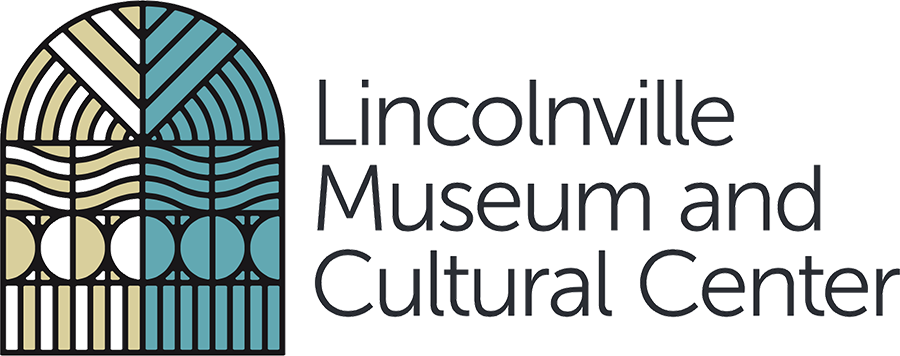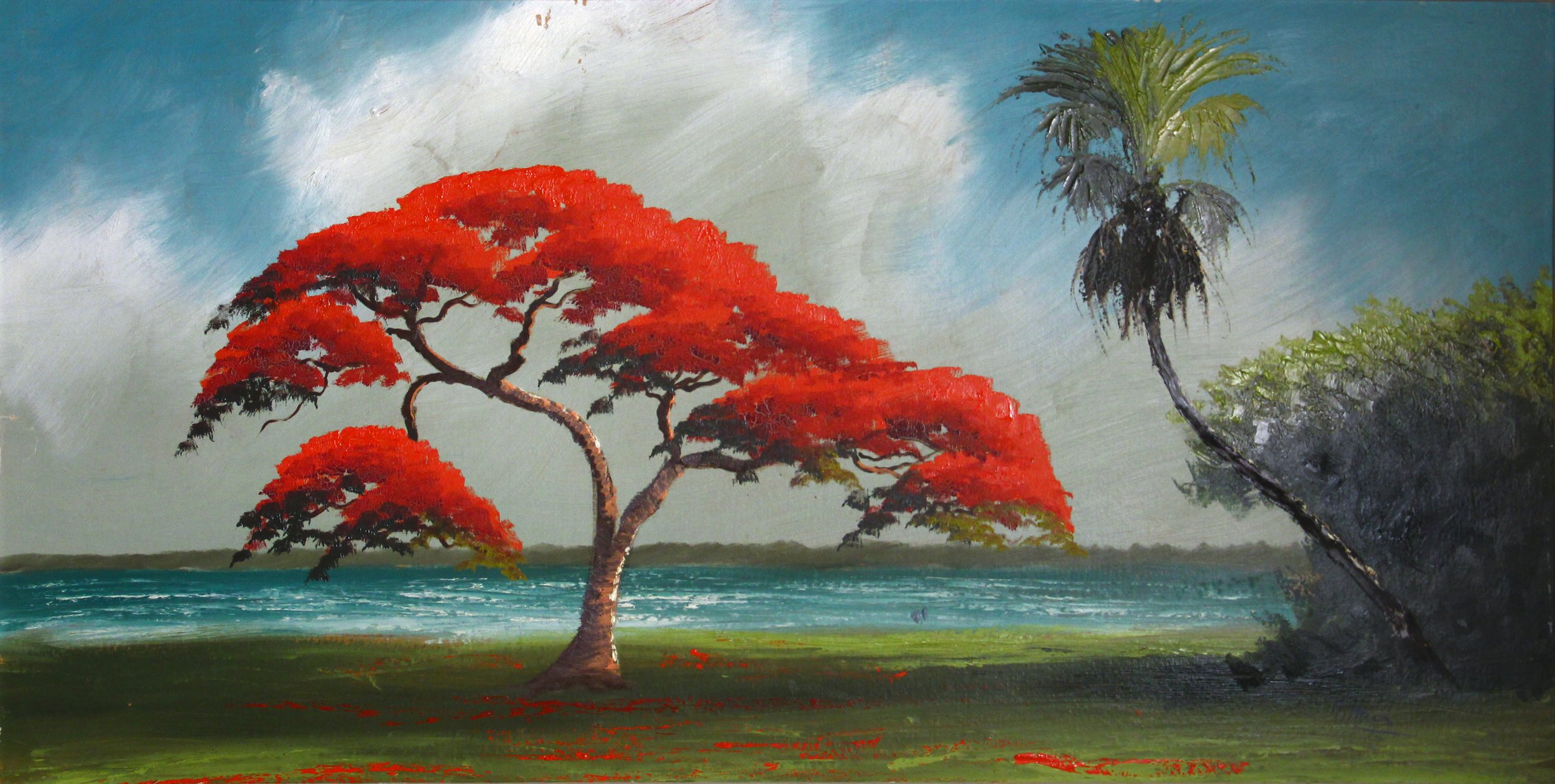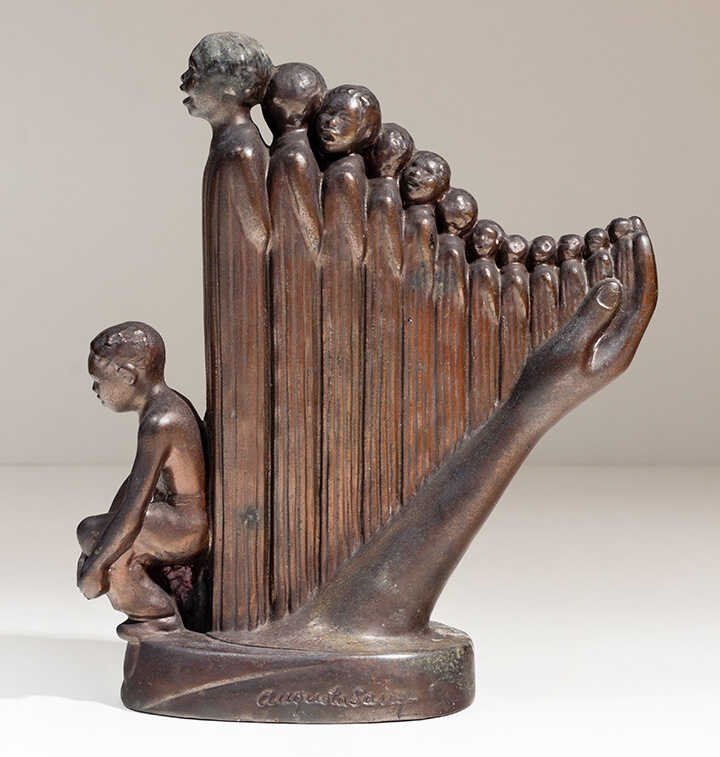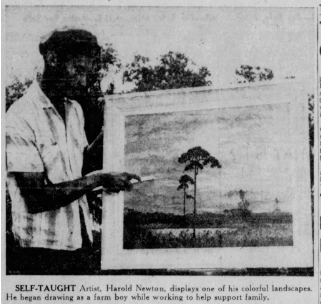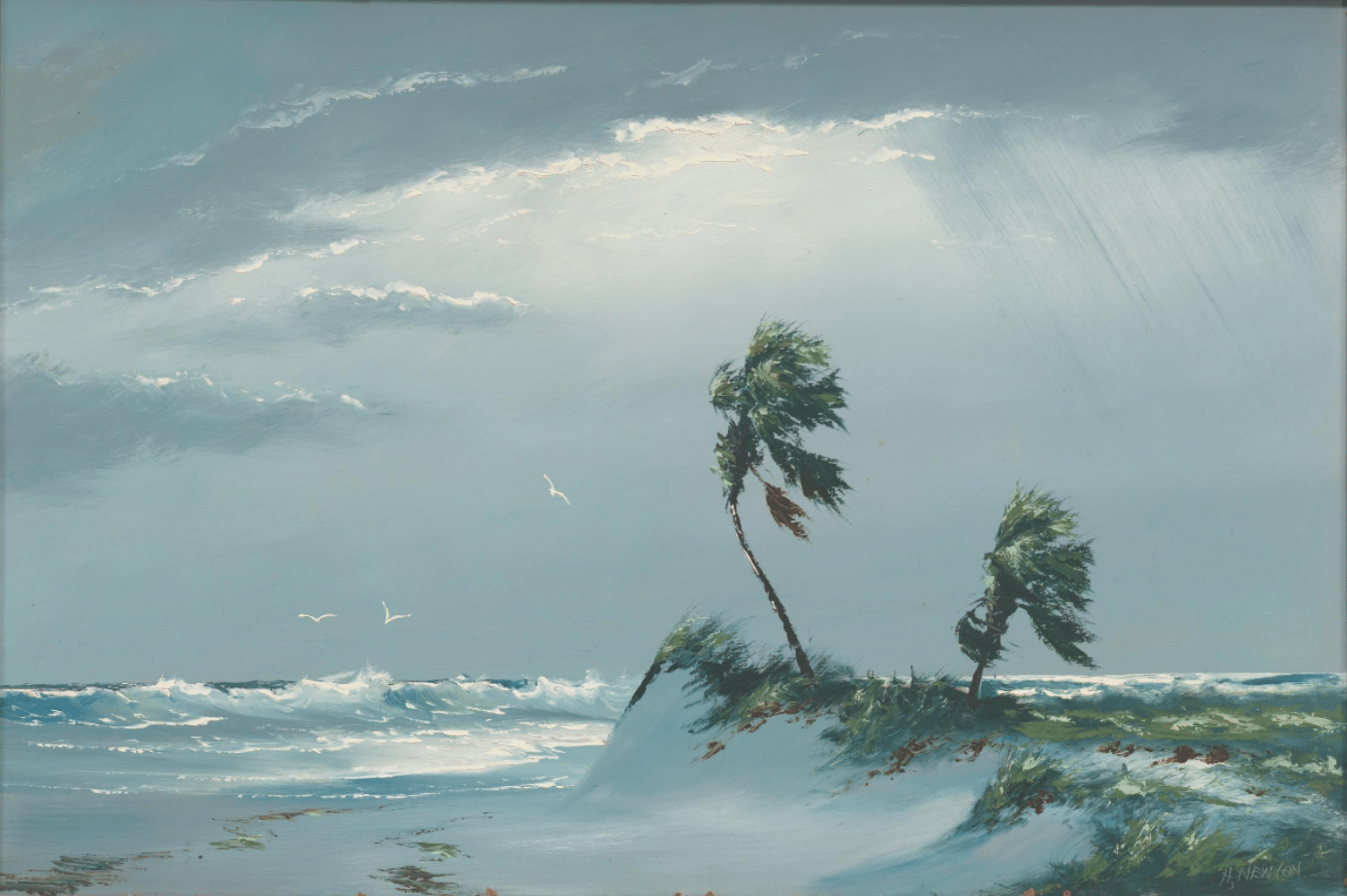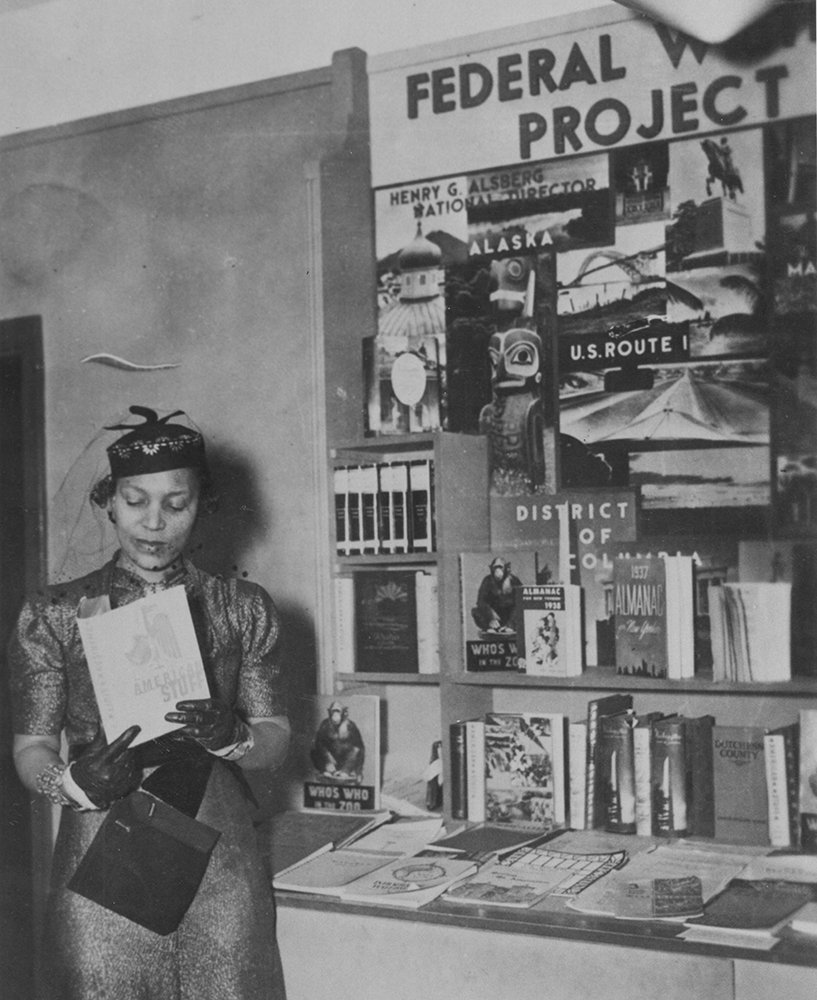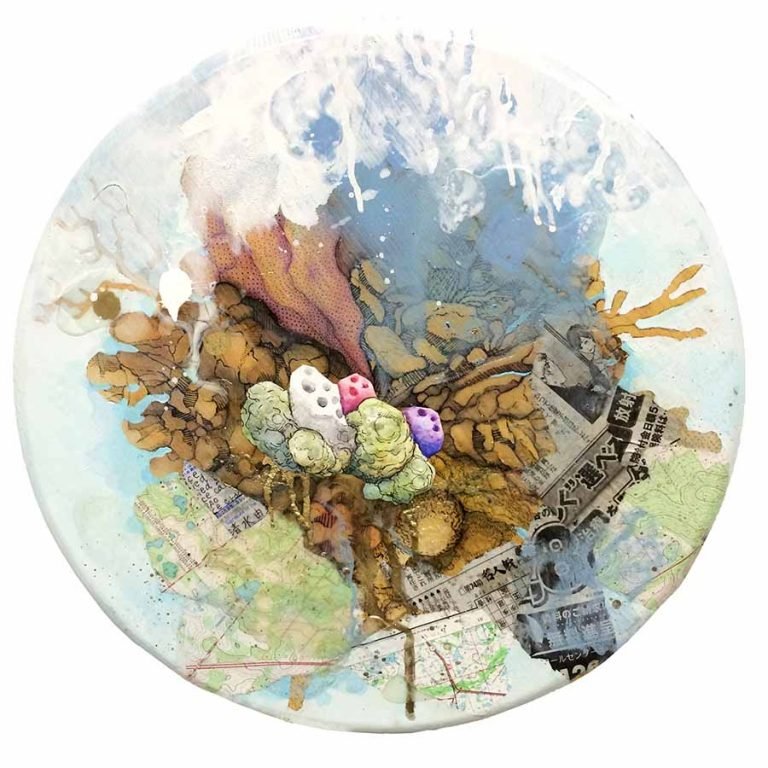African Americans and the Arts
Every Black History Month, the Association for the Study of African American Life and History (ASALH) picks a theme to focus on. The theme for 2024 is African Americans and the Arts. African American artists have used art to preserve history and community memory, and as a form of empowerment. We honor the African American artists from the past who endured and paved a way and the artists in the present who continue using their voice in a creative medium.
The LMCC wants to highlight several African American artists of varying medias throughout the year because Black History is important all year. This blog post is the first in a two part series where we feature multiple artists centering around ASALH’s theme. Additionally, we will also highlight one or two artists each month of 2024 from this blog on our social media pages.
Alfred Hair
Examples of Alfred Hair’s Artwork
Alfred Hair (1941-1970) was the founder and nicknamed the “idea man” of the Florida Highwaymen which was a group of 26 black artists who primarily painted Florida nature landscapes. Hair was born and raised in Fort Pierce, FL and looked to A. E. Backus as an inspiration whom he received mentorship and support from. A.E. Backus was a self-taught artist from Fort Pierce, FL known for their Florida landscape art work. The Florida Highwaymen got their name from Hair’s entrepreneurial idea of producing and selling their art along Florida Atlantic coast highways from car trunks and going door to door to businesses. Alfred Hair and the Florida Highwaymen operated during a time where Jim Crow laws limited African American rights and also during the Civil Rights Movement. Therefore, there were limited jobs available to the average Black person let alone careers in the arts. Studios would not allow them to showcase their art and this is where the idea of selling art along the highways derived from.
Hair was known for producing around twenty to thirty paintings a day. Hair was monumental as both an artist and entrepreneur by paving a way for his own art and fellow artists to be able to become successful in a time period that wanted to silence their creativity.
Augusta Savage
Augusta Savage was born in Green Cove Springs, Florida but spent most of her time in New York. She pursued pottery in West Palm Beach and Jacksonville, Florida but was not successful and decided to go to New York for her art career. During the 1930s, she was well known in Harlem as a sculptor, art teacher, and community art program director at the Harlem Community Arts Center. She also founded the Savage Studio of Arts and Crafts in 1932. One of her famous quotes is “I have created nothing really beautiful, really lasting, but if I can inspire one of these youngsters to develop the talent I know they possess, then my monument will be in their work.”
Savage was one of the first artists who consistently dealt with black physiognomy which is the art of determining character or personal characteristics from the form or features of the body, especially of the face. Savage’s largest work is The Harp, inspired by the lyrics of James Weldon Johnson's poem Lift Every Voice and Sing. The Harp depicts a group of twelve stylized black singers in graduated heights that symbolized the strings of the harp. The Harp by Augusta Savage was featured in the 1939 New York’s World Fair. However, the artwork was destroyed shortly after it was open to the public due to the lack of financial support Savage received.
Harold Newton
Harold Newton was one of the leading artists and co-founder of the Florida Highwaymen with a natural talent for art. He often used unconventional canvases such as velvet, Upson board (which was a suggestion from mentor A. E. Backus), and masonite. His paintings sold for more than 35 dollars in his day, which was more than most of the other Highwaymen.
Newton served as an inspiration and teacher to many of the other Highwaymen members such as Mary Ann Carroll, the only woman in the group. Newton was known for producing about four paintings a day all following the theme of this group which were landscape nature paintings. In 2004, all of the Highwaymen members were inducted into the Florida Artist Hall of Fame in Tallahassee, Florida.
Zora Neale Hurston
Born on January 7, 1891 and raised in Eatonville, Florida, Zora Neale Hurston was an influential writer and anthropologist in the first half of the 20th century. Eatonville is known for being the oldest Black-incorporated municipality in the country, allowing Hurston to have grown up witnessing Black achievement in her community. Hurston attended school until the age of 13 when her mother passed away and joined a traveling theater group as a maid. When she was 26, she decided to go back and complete her high school education under the false birth year of 1901, and eventually graduated from Barnard College in 1928.
Zora Neale Hurston’s writing career flourished in the late 30s and 40s, after publishing several articles, short stories and Southern Folklore tales such as Mules and Men. One of Hurston’s most prominent novels published in 1937 is titled Their Eyes Were Watching God. Arguably one of the most important novels in the African-American canon, the book tells the story of Janie Crawford and her journey of self discovery as she navigates three different marriages.
Debby Moore
As a student of Excelsior High School in the 1940s, Emmaline Maultsby was known to be a friendly girl with a nice smile. She left her city of St. Augustine at the age of 17 to pursue her career in music, and assumed the stage name of Debby Moore, before she married and became Debby McDade. Living in New York in the 50s, McDade found herself a successful career in music. She created connections with notable musicians such as Louis Armstrong, Woody Herman, and Louis Prima. Debby Moore’s most well known work was an album released in February of 1960 titled “My Kind of Blues,” a 13 track record consisting of her most well known songs such as “Five Months, Two Weeks, Two Days” and “Nothin’ But Trouble on My Mind.” McDade regrettably made her return to Florida in the seventies when her mother passed away.
Debby Moore is featured in the LMCC’s Women Who Made A Difference interactive exhibit along with other local icons Barbara Vickers, Kat Twine, Janie Young Price, and Mildred Larkins. Stop by the museum to learn more about Moore’s life and legacy.
My Kind of Blues, 1960
Dustin Harewood
Dustin Harewood’s art explores themes of multiculturalism, colonization, and how industrialization is affecting the environment. His art focuses on Florida, Barbados, and Japan in which these places hold special significance to him and his family. His family is from Barbados and he lived there for a time of his life. Japanese culture became increasingly important and inspirational to him after marrying his wife who is Japanese and traveling there several times. Harewood utilizes waste as his material, turning what society views as trash into works of art that tell a message of what he calls “throw away culture.”
Harewood is an art professor at Florida State College of Jacksonville educating today’s youth. In 2017 the Cultural Council of Greater Jacksonville awarded him the prize of ‘Arts Educator of the Year.’ Harewood’s mural art creates the opportunity to expose the public to art and open their minds.
Ebony Payne-English
Ebony Payne-English is a writer, poet, performer, and most importantly an educator based in Duval County, Florida. Her passion lies with educating the next generation by inspiring and guiding their creative minds. Payne-English states that poetry chose her. Since she was younger she believed that everything should rhyme and she took to poetry to express her emotions and learn to be vulnerable.
She also does playwriting and has albums out, being varied in the type of art she creates. It is evident that she desires to share her passions with others through all her different art but also the actions she takes to ensure the community is exposed to it as well. For example, she is the first woman to establish her own chapter of the international poetry organization, Black on Black Rhyme. Some of Ebony Payne-English’s achievements include that NPR selected Ebony’s concert at Jacksonville Beach’s Blue Jay Lounge as one of their top live session performances of 2022 and her band, Nakupenda, was featured in Episode 2 of Tiny Desk Top Shelf 2023.
Ebony Payne-English performing.
“I am whole and complete.
I am divinely capable.
Life is blessed by my presence, and I am present.
I am ready. I am willing.”
